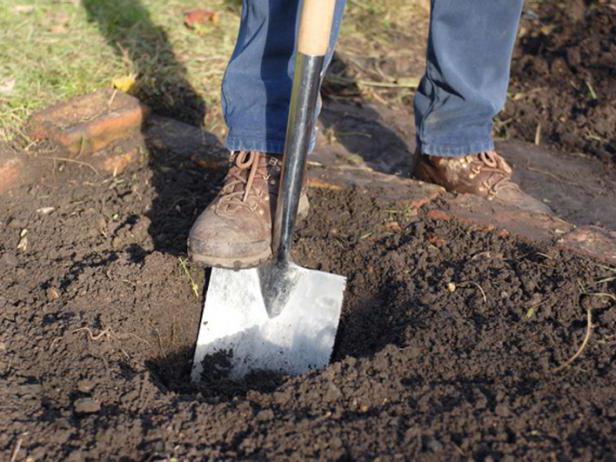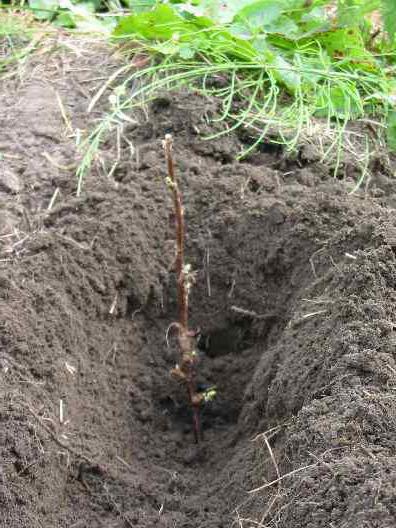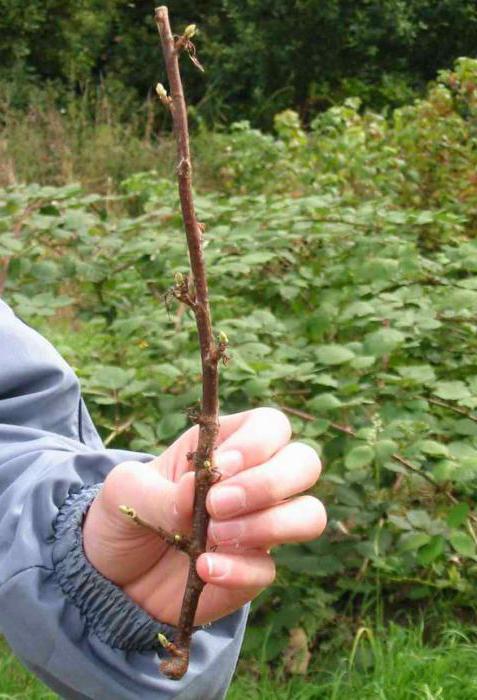Blackcurrant is a very tasty and healthy berry that every owner of a summer cottage would like to have in his garden. Many do not know when to plant currants: in spring or autumn. In this article, you will find answers to all questions regarding both planting and pruning, and the propagation of such bushes.
This is very important to know. After all, the size of berries, the health of the seedling and the taste of the fruit depend on where the currant will grow. If the place is chosen successfully, then blackcurrant will delight you with an abundant harvest for several decades in a row.
Choosing a place to land
Before starting planting, you need to carefully consider where to plant the currant. Such bushes like gentle slopes, good lighting. However, they calmly tolerate the shade for some time. The place should be protected from the wind and have good moisture.
The best soil for a black beauty is slightly acidic, but neutral is also suitable. These are chernozem and loamy soils of varying degrees . This type of shrub grows well along fences at a distance of 1 m from the fence. You can also plant this crop in the garden between young trees, however, you must remember that the distance from the trunks should be at least 2 m.
Bushes of this culture do not like lowlands and stagnant places with swamped water. When currants are planted in spring or autumn, you need to think about a system to eliminate excess moisture. If there is a threat of flooding, then care must be taken and a drainage structure should be thought out to divert excess fluid from the roots. Also, there should not be any ponds or streams nearby. Roots from cold constant moisture can rot, and seedlings will die. In winter, the bushes should be covered from the cold with fluffy snow. If they grow in the wind, then the frosty wind will destroy the poorly planted plant.
He does not like shrubs and places where gooseberry bushes used to grow or currants were found for a long time. Such soil has accumulated toxins that will adversely affect the young landing. You also need to look, if moss or horsetail grows on the site, then the earth has an increased acidity, which currants are afraid of. There should not be a landing.
Landing time
One of the frequently asked questions of all amateur gardeners is: "When to plant currants? In spring or autumn?" Some write that this plant is unpretentious, and you can plant it at any time. But most still advise autumn planting, and very early. The best time is mid-September or early October. The root system of the seedling has time to grow before the start of frost. After winter, the plant already sprouts, grows, and may even produce a small crop.
Some reviews of gardeners can be confusing. Some write that they cut a branch of a bush, put it in water, and a month later, when the roots grew, they immediately planted it in the ground (in the middle of summer). Others write that they planted in the spring and the plant took root perfectly at them.

Gardeners confirm that all this is true, blackcurrant is a very unpretentious and tenacious plant. Therefore, having planted it even in the summer, you can not be afraid. She takes root well, but there is one "but." It's all about productivity. If planting occurred in the spring, then the plant will also take root, take root, develop, but at best you will see the crop only in a year. But if the seedlings are lowered into the ground in the fall, then they will harden and get comfortable in a new place before the cold weather, they will winter well and in the very first spring will be pleased with flowers, and later with delicious black berries. So the question of when to plant currants: in spring or autumn, the correct answer will be - in the fall.
Preparing for landing
Before starting work, you need to prepare the ground. This is done 2, or even 3 weeks before landing, depending on what was on this site. If vegetables were previously grown on the territory or there was a flower bed, then such land does not require additional preparation.
If the soil is clay, then chernozem should be added to the hole. Acidified soils can be produced. To do this, use either burnt lime or dolomite flour. 400 g is taken for each square meter of soil. But after a layer of such fertilizer, you need to sprinkle a layer of earth so as not to burn the roots.
Step-by-step instruction
Planting currant seedlings occurs in several stages:
- The selected place is equal and digged onto the bayonet of a shovel.
- All unnecessary items are removed: the remains of the roots of other plants, stones, weeds.
- Lumps of hard earth break.
- Either a hole is excavated, or a trench if several bushes are planted at once. Its size: 0.5 m wide and 40 cm in depth. And the earth needs to be sorted. The upper fertile layer is deposited in one direction, and the inner filling of the fossa is in the opposite.
- Then a layer of fertilizer is poured at the bottom of the trench. This is a mixture of organics and a complex of minerals. For 3-4 kg of the first component, 200 g of the second is required (for each square meter of soil). Instead of fertilizer, you can add some wood ash, about 150 g.
- After the nutrient mixture, it is necessary to sprinkle with a layer of earth to protect the roots from the aggressive effects of fertilizers.
- If the soil on this site was too dry and hard, then a few days before planting it must be properly watered.
- Planting seedlings.

The distance between the bushes
Many people care about the question of how far to plant currants. It all depends on the variety of berries. If the branches of the bush grow straight up, then such a crop can be planted at a distance of 1 m. If the bushes of a certain variety are spreading, then the distance increases to 1.5 m.
Between the rows of planted plants leave 2 or 2.5 meters. It is more convenient for a comfortable passage between the bushes while caring for the plant and harvesting.
Buying seedlings
Planting is done either by seedlings or cuttings (suitable only for warm areas). In order to get a good harvest in the future, you need to carefully approach the choice of seedlings when buying. Often beginners and inexperienced gardeners are deceived by sellers, especially if the buyer came to the natural market for plants or bought on the highway on the way to the cottage. This, of course, is convenient, but not always justified. The variety that was presented by the seller may not grow at all, and the plant may turn out to be sick. In order not to get into trouble, you need to know the basic rules.

- The best purchase is in professional nurseries and stores where they will give you a full recommendation, a check and sell the currants of the sort you decide to buy.
- It is better to buy two-year-old seedlings. They are much stronger than annuals, acclimatize faster and begin to bear fruit actively in the very first year. Two-year-olds have a well-developed root system (15-20 cm), many root thin processes growing in the lobes. Correctly sold wet roots treated with clay mash.
- Twigs should be even and flexible (up to 40 cm), on which there are at least 2 or 3 good buds, not swollen, in which the tick can hide. There should not be dry or rotten spots, damaged shoots. The color of the bark is brown. When scratching the bark, the bottom should be the green part, smelling like currants.
How to prepare seedlings for planting
After the time of purchase, no time should pass before landing. To prevent the roots from drying out on the road, you need to wrap them with a damp cloth wrapped in a plastic bag. On the way, the seedlings should be in a vertical position.
If planting does not occur on the day of purchase, then for better preservation, the roots need to be dipped in clay solution and sprinkled with sawdust soaked in water.
Before lowering the seedlings into the trench, dry roots need to be cut. Leaves must be cut off. The shoots themselves should be short (up to 20 cm). Only 2-3 buds should be left on the branch. Another important point - the shoot is not planted directly, but at an angle of 45 about .
Currant watering
When you plant the bushes of this crop, the hole is poured with about 5 liters of water. After this, the seedling is sprinkled so that the roots are at a depth of 5 cm from the surface of the earth. After tamping the soil around the shoot, the seedling is poured again, but already twice as much water is needed. When the liquid is completely absorbed into the soil, around the planted shoot you need to sprinkle the earth with humus - mulch.
During the growth period of the bush, the plant is often watered, since currant is a water-loving plant. The soil for currants should be well moistened. It needs to be watered the entire vegetative period. If moisture is not enough for the bush, the berries will crumble or grow small.
The first time it is necessary to water well at the end of May. This is a period of active growth of currants. Next time - at the end of June. This is the ripening time of the berry. Also, the amount of irrigation depends on the ambient temperature. If the summer turned out to be hot, then the number of watering increases. It is necessary to ensure that the hydration is quite deep (up to 50 cm).
Large adult bushes require 30-40 liters per 1 m 2 . If the bush is young, then 10 liters for each bush is enough.
Currant propagation
If you have a beautiful fruiting bush of this crop growing in your summer cottage and you want to plant this wonderful berry in one more place, then it is not necessary to go to the store and buy expensive seedlings. It is enough to know how to reproduce currants:
- The seeds. This is a complex and rarely used method. First you need to collect large beautiful fruits, soak them well in water for several hours. Then you need to carefully remove the seeds, dry them on a sheet of paper. Store seeds before planting in a cloth bag.
- Lignified cuttings. They can be harvested during the period when currants are cut in spring or autumn. Twigs are cut from an annual plant, their thickness should be at least 6 mm, and their length should be 25 cm. The cut should be oblique (from the bottom to the bud, from above 1 cm below the top bud). Such cuttings are planted in the spring.
- Green cuttings. Twigs with a length of 15 cm are cut in spring with 3-4 leaves on each. It is good to cover the cuttings with plastic wrap after planting or cover with a plastic bottle.
- Apical cuttings. This method is rarely used because of its troubles. The soil must be specially prepared, and complex fertilizer of the soil is required.
- Layering. This is the easiest method when the extreme branch is lowered on its side, sprinkled with earth and adhered with a metal or wooden staple. After germination of young shoots, the mother branch is cut off, and the shoots are transplanted to a place of constant habitat.
Bush pruning
In the end, we will answer the frequently asked question: "When to prune currants: in spring or autumn?" After all, such a procedure can affect the crop. The correct answer is both in spring and autumn. In the spring, prior to sap flow, circumcision helps to increase yield. What does autumn pruning give? After the sap flow is completed, a crown is formed in this way, the bush is freed from broken and dry branches.
Trimming is a must every year. Then the fruits will delight you with their size and taste.